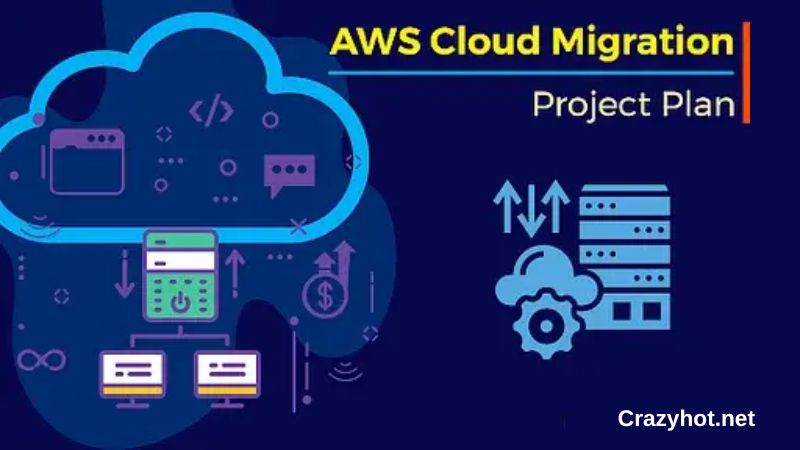In today’s digital landscape, the adoption of cloud computing has become imperative for businesses aiming to stay competitive and agile. Among the various cloud service providers, Amazon Web Services (AWS) stands out as a leader, offering a wide range of services and tools to cater to diverse business needs. However, migrating to AWS requires meticulous planning and execution to ensure a smooth transition and maximize the benefits of cloud technology. In this article, Crazyhot will delve into the intricacies of an AWS cloud implementation project plan, detailing each step to guide organizations through the process.
AWS Cloud Implementation Project Plan
1. Project Initiation Phase:
The AWS cloud implementation project plan begins with a clear understanding of objectives and scope. Stakeholders must be identified, and communication channels established to ensure effective collaboration throughout the project lifecycle. Resource allocation, including human, financial, and technical, is crucial for the project’s success. A well-defined project charter, outlining goals, timelines, and responsibilities, sets the foundation for the implementation journey.
2. Assessment and Planning Phase:

A thorough assessment of the current infrastructure is conducted to identify workloads suitable for migration to AWS. Cost analysis is performed to compare on-premises costs with AWS offerings, ensuring cost-effectiveness. Security and compliance requirements are defined to mitigate risks associated with cloud adoption. Based on workload requirements, the necessary AWS services are identified, and a migration strategy is developed, considering factors such as rehosting, refactoring, rearchitecting, rebuilding, or replacing.
3. Design Phase:
Architecting the AWS environment is a critical step, leveraging best practices and aligning with workload requirements. Designing networking architecture, including Virtual Private Cloud (VPC), subnets, and route tables, lays the groundwork for secure and efficient communication between resources. Identity and Access Management (IAM) policies are configured to manage user access and permissions effectively. Backup and disaster recovery strategies are defined to ensure data resilience. Monitoring and logging mechanisms, such as CloudWatch and CloudTrail, are put in place to facilitate proactive monitoring and troubleshooting. Scalability and elasticity are incorporated into the design to accommodate fluctuating workloads seamlessly.
4. Implementation Phase:
The implementation phase involves provisioning AWS resources according to the design specifications. Networking components, including VPC, subnets, and security groups, are set up to establish a secure and isolated environment. IAM roles, users, and permissions are configured to enforce least privilege access control. Applications and workloads are deployed to AWS infrastructure, followed by thorough testing and validation to ensure functionality and performance. Security measures, such as encryption and Web Application Firewall (WAF), are implemented to safeguard against potential threats.
5. Migration Phase (if applicable):
If migration of existing workloads is part of the project plan, it is executed according to the migration strategy developed earlier. Migration activities are monitored closely, and any issues or discrepancies are addressed promptly. Validation is conducted to ensure that migrated workloads are functioning correctly in the AWS environment.

6. Training and Documentation:
To ensure smooth transition and ongoing operation, training is provided to staff on AWS services being utilized. Documentation of configurations, processes, and best practices is essential for knowledge sharing and reference. Runbooks for maintenance, troubleshooting, and incident response are developed to streamline operational processes and enhance efficiency.
7. Testing and Quality Assurance:
Thorough testing is conducted to validate the AWS environment’s functionality, security, and performance. Security audits and vulnerability assessments are performed to identify and mitigate potential risks. Performance and scalability are evaluated to ensure that the infrastructure meets the organization’s requirements. Compliance with regulatory standards is verified to uphold data integrity and confidentiality.
8. Deployment Phase:
The deployment phase involves planning and executing the cutover to the AWS environment. During this critical period, performance is monitored closely, and any issues or bottlenecks are addressed promptly to minimize disruption. Optimization measures are implemented to fine-tune the environment for optimal efficiency and cost-effectiveness.
9. Post-Implementation Support:
Ongoing support is provided to users of the AWS environment to address any questions or issues that may arise. Performance and security are monitored continuously, and adjustments are made as necessary to optimize resource utilization and ensure compliance. Feedback from users is collected and incorporated into future improvements and iterations.

10. Review and Optimization:
A post-implementation review is conducted to evaluate the project’s success and identify lessons learned. Areas for improvement and optimization are identified, and feedback is incorporated into future projects or iterations. Continuous optimization efforts are undertaken to maximize the benefits of AWS cloud adoption and drive business growth.
Final Thought
In conclusion, the AWS cloud implementation project plan serves as a roadmap for organizations embarking on their cloud adoption journey. By following the outlined steps meticulously, businesses can leverage the full potential of AWS services to enhance agility, scalability, and efficiency. With careful planning, execution, and ongoing optimization, organizations can master AWS cloud implementation and unlock new opportunities for innovation and growth.
In summary, the AWS cloud implementation project plan is a comprehensive roadmap for organizations embarking on their cloud adoption journey. Through meticulous planning, execution, and ongoing optimization, businesses can leverage the full potential of AWS services to enhance agility, scalability, and efficiency, driving innovation and growth in the digital age.





